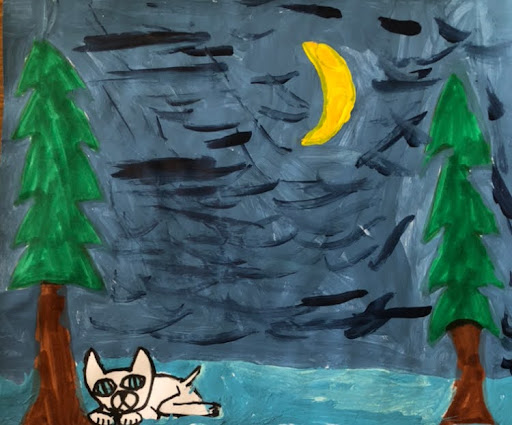Overview

Author(s) : Kishan Lara-Cooper, PhD (Yurok, Kaurk, Hupa)
Lesson partner: Rebecca Lowry, Humboldt County Office of Education
Grade(s) : 2
Suggested Amount of Time : 35-40 Minutes
Curriculum Themes:
- Cultural Strengths
- Relationship to Place
- Cross Curricular Integration
Learning Goals
Listen, comprehend, retell and predict the ending to a story.
Be exposed to Indigenous identity, beliefs, lanuage, customs and story-telling through the lens of a child their own age.
Understand that stories are a reflection of how the author views the world around them.
Work independently, as a partner, and as a classroom community to see the world from another perspective.
Lesson Overview
This lesson exposes students to story-telling traditions of American Indian nations in the northwest California region as well as strengthens their reading, writing, listening, and speaking skills. This lesson features a short story written and illustrated by Teh-sa’a:n-xwe Cooper when he was 8 years old. The Northern Howl: A Story of the Pup is the first book of a three-books series. This is a book of a wolf pup born into the mysterious lives of wolves in a magical forest. The narrative leads the mystery of the story, from the magical ice bird to the changing colors of his fur. Teh-sa’a:n-xwe tiptoes on the precipice of ancient Indigenous knowledge and the magical dimensions of the world around him. The wolf pup, Vision, moves the reader through a vast array of human, animal, and spiritual emotions and family ties from the time of his birth through the loss of his mother. This lesson encourages children to see the world from a different lens while inspiring them to share stories of their own.
Essential Questions:
How can we learn by listening to stories?
Who are the main characters of the story and what do they represent?
What stories do I have to tell?
Teacher Background
This lesson is part of the statewide Native American Studies Model Curriculum and focuses on the Northwest California region. The Yurok, Hupa, Karuk, Wiyot and Tolowa peoples live in Northwest California along the redwood coast. The Yurok Tribe is one of the largest tribes in California with one of the largest land bases. Storytelling amongst American Indian peoples is an important teaching tool. Although the tribes are similar, they also have unique differences. For example, Yurok people along the Pacific coast and lower Klamath River utilize redwood plank homes. While Hupa, Karuk, and upper Klamath River Yurok peoples may utilize cedar to build their plank houses. Although it is not integral for students to know and understand all these details, it is important to help them to understand that not all Indigenous/American Indian nations are the same. Likewise, these similarities and differences are a part of Indigenous identities, religious beliefs, customs, and traditions (as noted in the History-Social Science standards). Further, it is also critical to utilize “present-tense language” through the lesson plan. For example: Share with students that “Yurok people use grapevines to tie the redwood plank boards together” rather than “Yurok people used grapevines to tie redwood plank boards together. “Present-tense language” sends an important message that Yurok people continue to live and thrive today.
The teacher must understand that storytelling is a form of curriculum for Indigenous peoples that teaches history, language, listening and speaking skills, original structions, and how to relate to the natural, spiritual, and human elements of the world. Therefore, referring to these oral traditions as “myths”, “legends”, “folklore”, etc are incongruent with the goals of this lesson as these terms have historically minimized the significance and value of Indigenous storytelling and Indigenous knowledge.The teacher must be prepared to actively engage students in recalling, reflecting, and retelling key components of the story.